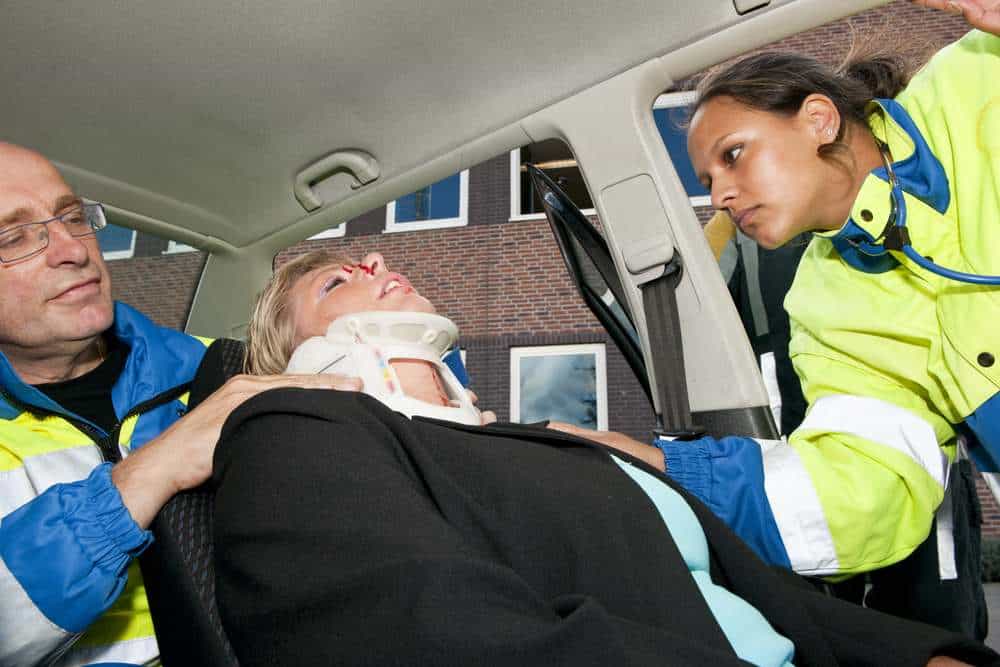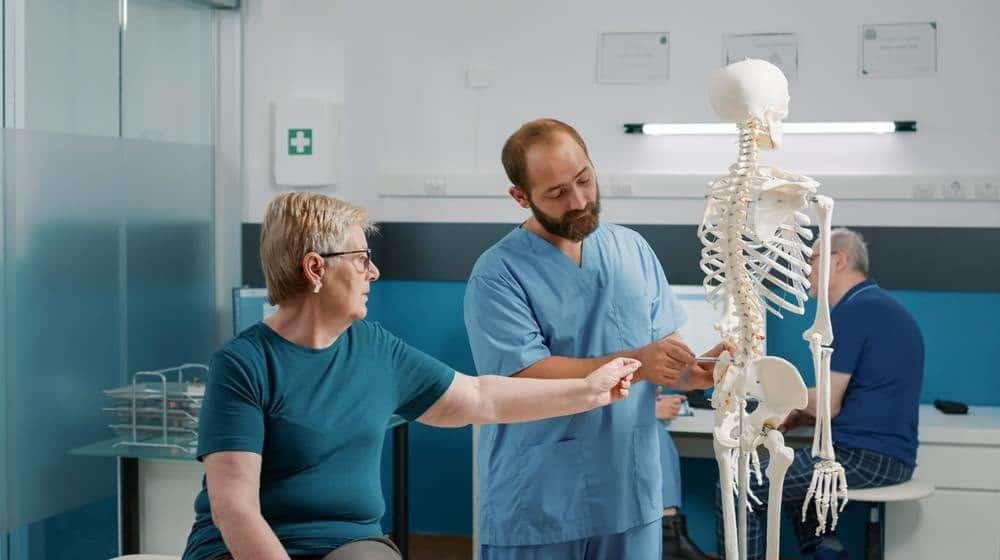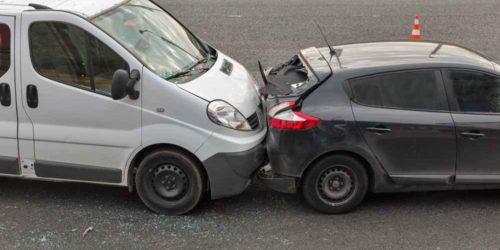Spinal cord injuries can be intimidating and complex when they happen to you or a loved one. They can seem even more complex when they occur during a car accident, as the moments following a car accident or shocking injury are confusing and overwhelming. Even if you don’t notice any immediate injuries, it is important to have a full medical evaluation after an accident.
Caused by trauma to the spinal cord, spinal cord injuries are complex injuries and are commonly the result of a car accident, fall, diving injury, or sports injuries. When discussing spinal cord injuries, two primary descriptors are used, incomplete and complete. When diagnosing a spinal cord injury, it may take several days or even weeks to determine which type of spinal cord injury a patient has due to swelling and other injuries after the trauma.
Spinal Injury Symptoms After An Accident

Any time you have experienced trauma, especially one that may have impacted your head, neck, or back, it is imperative to seek immediate medical attention. Following a spinal cord injury, you may experience some of the following symptoms depending on the type of injury.
An incomplete spinal cord injury is the most common type of spinal cord injury. An incomplete spinal cord injury will leave a patient with some feeling and function below the location of the trauma. They have the most variances between incomplete and complete injuries.
Symptoms of an incomplete spinal cord injury include:
- Reduced sensation below the injury site
- Difficulty moving your arms or legs
- Pain or intense stinging below the injury
A complete spinal cord injury is the total severing or compression of the spinal cord. The cord is permanently damaged, preventing all brain signals from reaching parts of the body below the injury. Symptoms of a complete spinal cord injury include:
- Difficulty breathing
- Complete loss of sensation below the injury site
- Bowel or bladder dysfunction
- Loss of movement
Loss Of Sensation
Loss of sensation occurs when damage is done to sensory nerves. These nerves give you the ability to feel touch, pain, temperature, vibration, and even the ability to sense the presence of your arms and legs. This can occur at any level of injury on the spine; the area affected depends on the level of injury.
Weakness Or Paralysis In The Arms And Legs
Even mild damage to the spinal cord may cause weakness or paralysis in your extremities. Damage to the high cervical section of your spine can cause total paralysis to all extremities and torso muscles. If you have an injury to the lumbar or sacral area, you are more likely to have weakness or paralysis of your legs. Similarly, injury to the thoracic region can result in arm weakness or paralysis.
Problems In Bowel Or Bladder Control
Sometimes, a spinal cord injury will interrupt the transmission of neurons between the brain and the nerves in the spinal cord that controls bladder and bowel function. It may be necessary to have a catheter or even a colostomy for healthy control of bladder and bowel movements.
Respiratory Difficulty
With some spinal cord injuries, it is possible to have difficulty breathing. This can be due to paralysis or just weakening of chest muscles. Depending on the severity of the injury, a patient may need full intubation, or oxygenation might be able to be managed with high-flow oxygen or a noninvasive ventilator.
If difficulty breathing is not addressed, a patient can develop multiple breathing problems. They can develop pneumonia easily as they are not able to clear natural secretions in the lungs, they may become hypoventilated as they are unable to take in enough oxygen, and even atelectasis.
Stinging Sensation In The Spine Due To Damaged Nerves
It is a common symptom of spinal cord injuries to have chronic pain. This pain can be in areas that typically have no sensation but can also be referred to other areas of the body. It is typically stinging or burning as this pain originates from damaged nerves, so it is considered nerve pain.
Common Accident-Related Spinal Injuries

These are the most common spinal injuries that are caused by car accidents:
- Whiplash
- Herniated disc
- Vertebral fractures
- Pinched nerves
- Paraplegia or Quadriplegia
- Spinal Stenosis
- Spondylolysis
Emergency Signs & Symptoms Of Spinal Cord Injuries
While you should always seek medical treatment following an accident, some symptoms are considered emergencies, and you should call 911 or proceed to your closest emergency room. These are symptoms that indicate a life-threatening injury or an injury that needs immediate intervention.
- Extreme pressure in the neck, head, or back
- Extreme pain
- Tingling or loss of sensation in your extremities
- Loss of bladder or bowel control
- Difficulty breathing or feeling of being unable to catch your breath
- Unable to walk or significant discoordination following an accident
Spinal Cord Injury Diagnosis & Treatment

If you have been in an accident or fallen in a way that could affect your spinal cord, it is important to be evaluated and have all appropriate diagnostics done. If you are transported to an emergency center, you will likely have multiple tests done upon admission. Evaluating and diagnosing a spinal cord injury usually comprises a manual examination, imaging, and lab work.
- Manual examination
- X-ray – used to identify breaks, dislocations, or other damage to bones after a trauma.
- MRI – used to evaluate soft tissues, nerves, and blood vessels.
- CT Scan – High-definition images and is typically a fast scan, so it is often utilized in emergencies. Shows both skeletal and soft tissue injuries.
- Lab Work
Once all appropriate diagnostic tests have been performed, your healthcare team can begin to determine an appropriate treatment course. Remember that spinal cord injuries are often accompanied by a lot of soft tissue swelling. Because of this, your doctors will continue to perform diagnostics as the swelling decreases in order to determine the true extent of damage to your spinal cord.
Your treatment for your spinal cord injury will be specific to how extreme your injury is. There is currently no way to repair a damaged spinal cord, but the medical community is actively working on developing treatments to stimulate spinal cord regeneration. The following list provides information on modalities commonly used to treat spinal cord injuries.
- Emergency – The main goal when treating any emergency is to stabilize the patient. This can involve immobilizing the neck and spine, staunching any active bleeding, and obtaining as much information as possible.
- Early Stages – In the early stages of treating a spinal cord injury, while you are still in an emergency state, your doctors continue to stabilize the patient. If you are unable to breathe or are having difficulty, they will place a breathing tube if necessary.
- Ongoing Care – as you recover from the accident, you will need a variety of treatments to ensure a quality of life. You may need physical therapy, occupational therapy, chiropractic treatment, or even surgery.
How Pro-Care Chiropractic Treatment Helps Spinal Cord Injury Recovery
Chiropractic care can be used in addition to your main treatment course for a spinal cord injury. Chiropractic treatment involves hands-on spinal manipulation. The goal of Pro-Care’s chiropractors is to treat injuries and alleviate any associated pain, tension, and discomfort.
Chiropractors can help manipulate herniated discs to relieve pressure and pain in the spinal cord. Chiropractic care is generally considered a safe and effective form of treatment for certain spinal cord injuries. It can help improve your body mechanics and relieve pain and discomfort. If you’re ready to get recovery from your spinal cord injury, book an appointment with Pro-Care today.



